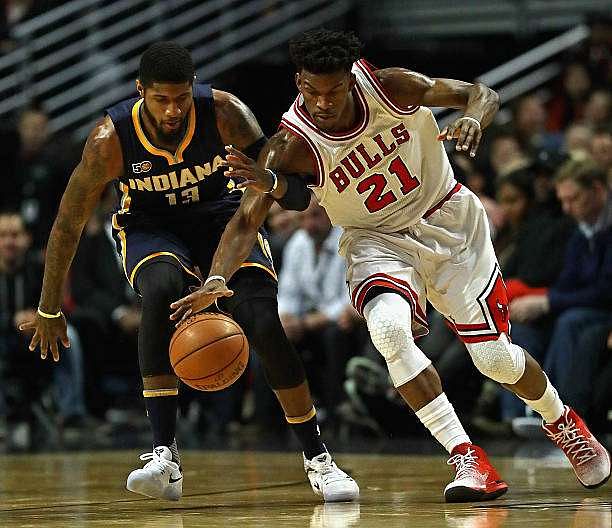
Analysing the impact of Gordon Hayward joining the Boston Celtics

Just days into free agency, the NBA hierarchy was dramatically shuffled as the Boston Celtics won the lottery for the services of All-Star Forward Gordon Hayward. Having played seven seasons with the Jazz, Hayward continually grew to a level of stardom and had a breakout season last year averaging close to 22.0 ppg as well as 5 rpg.
Entering free agency, many theorised that Hayward would indeed go to the Celtics to pair up with his old college coach back in Butler – Brad Stevens – and move to the weaker Eastern Conference where he could push the C’s over the three-time defending conference champions, the Cleveland Cavaliers.
After a series of leaks and denials, Hayward officially declared his choice on the Players’ Tribune and said that he had unfinished business with Stevens. Hayward definitely improves the Celtics and their chances to make the Finals but by how much?
As of right now, Hayward to the Celtics seems like a match made in heaven, in fact, that was the case for most of the speculation throughout the season and weeks leading up to July 1st. But in the long run, the decision might seem to be viewed as rushed or wrong.
Even though some may argue that the Celtics with Hayward are going to be better than the Jazz (had he stayed in Utah), the ceiling for the Celtics seems small compared to other, more promising teams. Let’s analyse the game of Hayward and breakdown the Celtics piece-by-piece.
Here are the reasons why Hayward’s move isn’t all that great:

#1 The Celtics’ offence was driven by the 5’9” Isaiah Thomas who thrives when he has utmost control of the basketball. Unfortunately for him, Hayward also thrives when he has the ball in his hands. The Celtics would likely see less of Thomas in the game.
#2 To be fair, Hayward played a large role in bringing the paltry Jazz back into contention and lifting them to the 51-31 record they achieved last season. Unfortunately, he won’t be able to take part in Utah’s revival and support them like he did previously. With Rudy Gobert as a defensive anchor, there’s no telling how far the Jazz could’ve gone.
#3 Rudy Gobert. With all due respect to Al Horford, he simply isn’t the defensive pillar Gobert is or the fast-paced athletic big that the Frenchman can be. All he has over Gobert right now is that sweet 3-pt shot but he’ll be doing a lot less shooting once Hayward arrives. If Hayward and Gobert were still on the same team and kept improving like they did over the years, that formidable duo could have eventually (with. maybe another all-star) finished high in the Western rankings and gone deep into the postseason.
#4 In order for the Celtics to call the season a success, they must go through a familiar foe: LeBron James. Even with the addition of Hayward, defensively the Celtics would probably struggle at the SF position where LeBron seems to be very comfortable when playing against the Celtics. LeBron doesn’t seem to be slowing down and the Cavaliers are rumoured to acquire Carmelo Anthony in either a trade or signing (post buy-out). With the Cavs getting better as well, the Celtics would probably need to acquire another All-Star.

#5 The Celtics lost out on Paul George and Jimmy Butler, choosing to keep their ‘valuable’ draft picks and cultivate talent in Boston. Hayward joined a team that now has TWO 3rd overall picks from the last two drafts (Jaylen Brown, Jayson Tatum), so while they are still growing Hayward is going to be wasting his prime years.
#6 Before Hayward can officially sign a max contract with the Celtics, he must wait for them to create cap space by putting Crowder and Smart on the trade block (after Olynyk agreed on a deal with Miami Heat). With their depth lost and depleted, the Celtics won’t really improve next year and will be, as LeBron said “top-heavy.”
#7 The last straw to pull out of his decision would be that next year both Isaiah Thomas and Avery Bradley will become free agents and likely demand max contracts or at least somewhere in that region. The NBA cap space is not increasing as expected and the Celtics will likely have to give away some other players to keep those two, essential pieces to the puzzle. Two years from now, the Celtics’ roster could look completely different.
Alas! Arguably, the biggest free agent of this summer has made a decision, and while he isn’t the same player as Durant, his move will create a ripple effect in the NBA for the next few weeks.
More teams will acquire solid role players and the Celtics will make some moves to open up space. Thomas meanwhile will likely start trying to pass more (can’t call Kobe for that) and the Jazz will have to make a decision on whether they should sign-and-trade Hayward or just let him go. Either way, they lose.